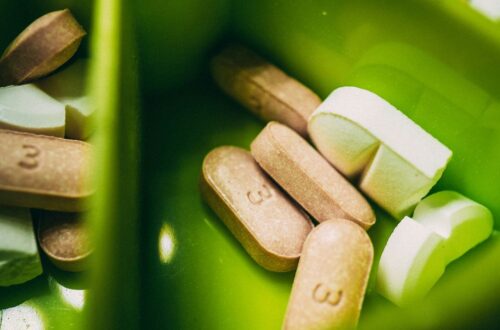Master These Essential Home First Aid Hacks for Any Emergency Situation
Every household should be prepared for the unexpected. Whether it’s a minor scrape or a more serious injury, having a grasp of essential first aid can make a significant difference. I can’t help but think back to the time my younger brother decided to attempt a skateboard trick that, let’s just say, should have stayed in the realm of imagination. A trip to the ER was avoided, but only because our family knew a few handy first aid hacks. In the spirit of preparedness, let’s dive into some essential home first aid hacks that might just save the day when you need it most.
The Basics of First Aid: What You Should Always Have on Hand
Before we get into the hacks, it’s vital to establish a solid foundation. A well-stocked first aid kit is your first line of defense. It doesn’t have to be fancy, just functional. Here’s a quick rundown of what to include:
- Adhesive bandages (various sizes)
- Gauze pads and adhesive tape
- Antiseptic wipes or solution
- Hydrocortisone cream for itching
- Antibiotic ointment
- Burn cream or gel
- Scissors and tweezers
- Instant cold packs
- Pain relievers like ibuprofen or acetaminophen
- A digital thermometer
Now, I know what you’re thinking: “That’s a lot of stuff!” But trust me, it’s worth it. Having these basics can empower you to handle many situations without panicking. (And let’s be honest, nobody wants to be that person who faints at the sight of blood.)
Hack #1: The Ice Pack Alternative
When you have a bruise or a sprain, an ice pack is your best friend. But what if you don’t have one? No worries! You can create your own ice pack using a few common household items. Just grab a resealable plastic bag, fill it halfway with water, and add some rubbing alcohol. Seal it tight and freeze it. The alcohol prevents the water from freezing solid, giving you a slushy ice pack perfect for soothing those aches and pains.
I remember my neighbor once used this hack after a rather enthusiastic game of basketball left him limping. A simple DIY ice pack made all the difference while he waited for the swelling to go down. It’s a quick fix that’s easy to whip up!
Hack #2: The Power of Honey
Did you know honey isn’t just for your tea? This sweet substance has been used for centuries as a natural remedy. It possesses antibacterial properties and can promote healing. If you have a minor cut or burn, applying a thin layer of honey can help. It creates a barrier against bacteria and keeps the wound moist, which is essential for healing.
Just a quick note here: make sure to use raw honey, as it has the most beneficial properties. I once made the mistake of using flavored honey—let’s just say it wasn’t my wisest choice. (It’s a sticky situation, pun intended!)
Hack #3: Oregano Oil for Antiseptic Needs
In an age where natural remedies are gaining popularity, oregano oil has emerged as a powerhouse. Its strong antimicrobial properties can be an effective antiseptic for minor cuts and scrapes. Just a drop or two on the affected area can work wonders.
Now, I’m not suggesting you ditch your traditional antiseptics entirely, but keeping a small bottle of oregano oil in your first aid kit can provide an alternative when needed. Just be cautious—like many essential oils, it can be potent. A friend of mine learned that the hard way after using too much and ending up with a rash! (Yikes!)
Hack #4: The Magic of Baking Soda
Baking soda isn’t just for baking; it’s a versatile household staple that works wonders in first aid. If you’ve suffered a bee sting, mix a bit of baking soda with water to create a paste and apply it to the sting site. This can help neutralize the venom and alleviate itching and swelling.
It’s a trick I learned from my grandmother, who always seemed to have a solution for everything. I recall a summer beach trip where this hack saved the day for my cousin, who had an unfortunate encounter with a bee. A little baking soda and water, and he was back to chasing waves in no time!
Hack #5: A Quick Fix for Nosebleeds
Nosebleeds can be alarming, but they’re usually harmless. To stop a nosebleed, sit upright and pinch the soft part of your nose for about 10 minutes. But here’s a nifty hack: apply a cold compress to the back of your neck. This can help constrict blood vessels and speed up the clotting process.
It’s funny how something so simple can have such a big impact. I once had a nosebleed during a family dinner, and after a few awkward moments, I remembered this trick. Let’s just say my relatives were less than impressed by my sudden switch to “emergency mode.”
Hack #6: Activated Charcoal for Poisoning
If you suspect someone has ingested poison, activated charcoal can be a lifesaver. It absorbs toxins in the stomach, preventing them from entering the bloodstream. However, you should always call poison control first before administering it. They can guide you on the right dosage and whether it’s appropriate for the situation.
To be honest, I was skeptical about this one at first. But after hearing about a friend whose child accidentally swallowed a couple of pills, I quickly changed my tune. Activated charcoal was a game-changer in that scenario, and it’s definitely worth having in your first aid arsenal.
Hack #7: The Old Vinegar Trick
Vinegar has been touted for its many uses, and first aid is one of them. It can be particularly effective for treating minor burns or sunburns. Just dilute it with equal parts water and apply it to the affected area using a clean cloth. It can soothe the pain and promote healing.
Of course, I’d be remiss not to mention that vinegar isn’t a miracle cure. (I learned this the hard way after trying to use it on a more serious burn—let’s just say, I had to call for backup.) But for minor burns, it’s a surprisingly effective solution.
Hack #8: Aloe Vera for Skin Care
Aloe vera is often dubbed “the first aid plant” for good reason. It’s excellent for soothing burns, cuts, and even insect bites. If you have an aloe vera plant at home, simply break off a leaf and apply the gel directly to the affected area. It’s cooling and promotes healing.
I can’t help but smile when I think of my childhood summers spent in my grandmother’s garden, where she had a whole patch of aloe vera. Whenever I got a sunburn, she would send me off with a leaf in hand, and I quickly learned the value of that little green plant.
Hack #9: The Power of Pressure for Cuts
When dealing with cuts, applying direct pressure can be your best bet for stopping bleeding. But did you know that elevating the injured area can also help? It’s a simple trick that can be crucial in emergencies. If a finger is bleeding, hold it above the heart level while applying pressure.
Once, during a family camping trip, my cousin managed to slice his finger while trying to open a can of beans (yes, it was as dramatic as it sounds). We quickly applied pressure and elevated his hand, and thankfully, we avoided a trip to the nearest urgent care.
Hack #10: The Importance of Knowing CPR
While not exactly a “hack,” knowing CPR is one of the most vital skills you can possess. It’s a lifesaver in emergencies and can make all the difference in critical situations. Taking a CPR course is an investment in safety that I wholeheartedly recommend. I remember my first class—it felt daunting at first, but by the end, I felt empowered and ready to help.
Plus, you never know when you might need it. I once had a friend who used his skills during a community event when an elderly gentleman collapsed. Thanks to his training, he was able to act quickly and effectively, and that’s something he’ll carry with him forever.
Hack #11: Essential Oils for a Calm Environment
Injuries can be stressful, and sometimes a little aromatherapy can help calm nerves—yours or the person needing treatment. Essential oils like lavender and chamomile have soothing properties. Add a few drops to a diffuser or mix them with a carrier oil for a gentle massage. It’s a comforting way to ease anxiety during a tense moment.
One evening, after a particularly chaotic day, I decided to try this hack. I set up my diffuser with lavender oil while patching up a minor scrape on my nephew’s knee. We both ended up feeling a little more relaxed and ready to tackle whatever came next!
Hack #12: When in Doubt, Call for Help
Lastly, no amount of hacks can substitute for professional medical help when it’s truly needed. If you’re ever uncertain about how to handle an injury, don’t hesitate to reach out for assistance. Trust me, it’s better to err on the side of caution. I can’t stress this enough—there’s no shame in calling for help!
Preparing Your Family for Emergencies
Now that you’re armed with these first aid hacks, it’s essential to ensure that your family is also prepared. Familiarize everyone with your first aid kit and discuss how to handle common emergencies. Role-playing is a great way to practice. (I know, it sounds silly, but it can be quite effective!)
Consider holding family meetings where you discuss various scenarios and how to respond. You could even turn it into a fun game! Just remember, the goal is to instill confidence and knowledge in your family members so they feel empowered to act when it matters most.
Conclusion: Your Home as a Safe Haven
In the end, the home should be a sanctuary, even in emergencies. Knowing these hacks and having the right tools at your disposal can help create a sense of security. I hope this article inspires you to take charge of your home first aid preparations. Remember, a little knowledge can go a long way. Whether it’s a bee sting, a cut, or even a nosebleed, you’ve got the tools to handle it. So go ahead, be the hero of your household—you never know when you’ll need to save the day!
Stay safe, stay prepared, and may your first aid kit always be stocked!






